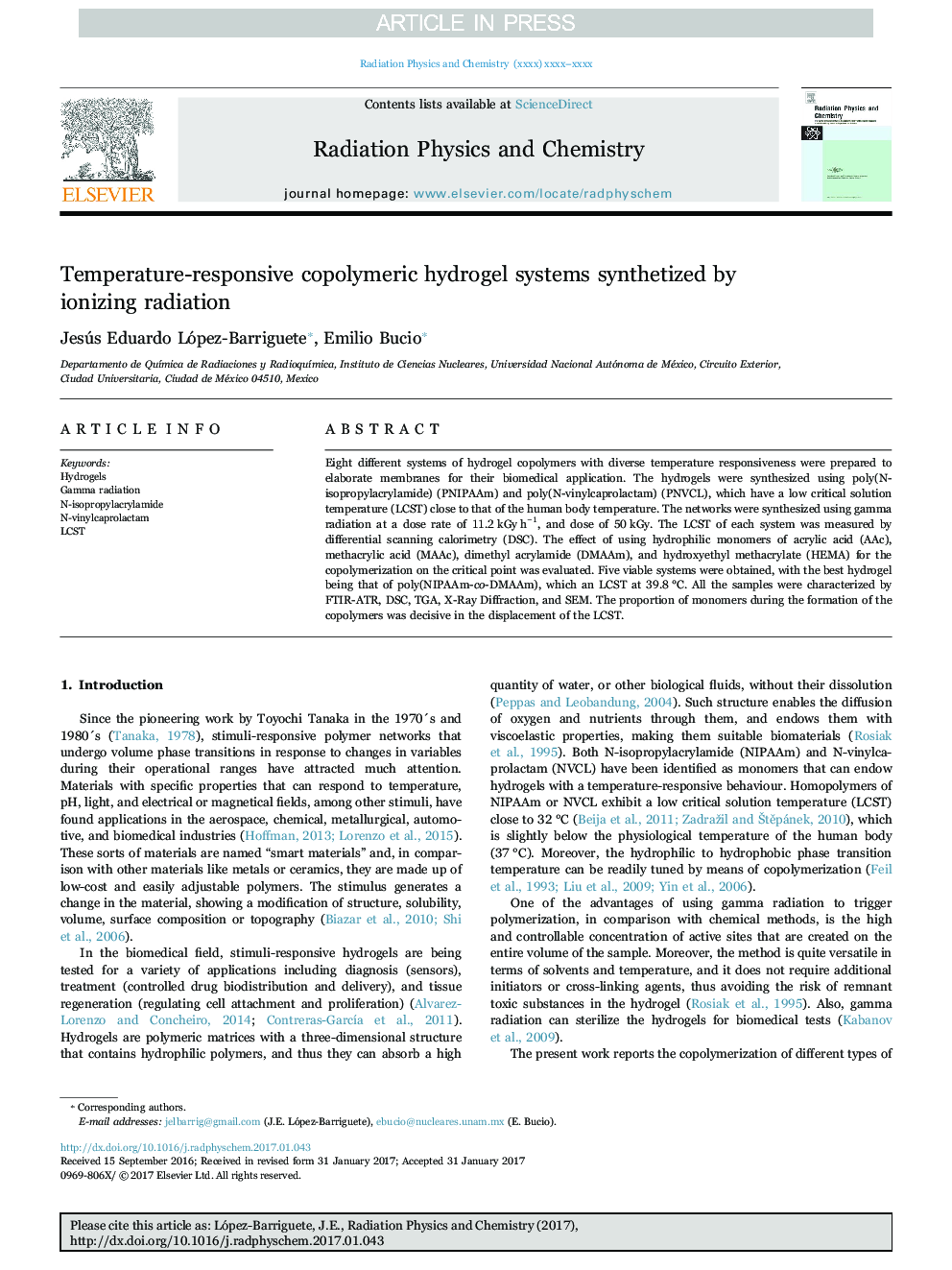| Article ID | Journal | Published Year | Pages | File Type |
|---|---|---|---|---|
| 5499226 | Radiation Physics and Chemistry | 2017 | 8 Pages |
Abstract
Eight different systems of hydrogel copolymers with diverse temperature responsiveness were prepared to elaborate membranes for their biomedical application. The hydrogels were synthesized using poly(N-isopropylacrylamide) (PNIPAAm) and poly(N-vinylcaprolactam) (PNVCL), which have a low critical solution temperature (LCST) close to that of the human body temperature. The networks were synthesized using gamma radiation at a dose rate of 11.2 kGy hâ1, and dose of 50 kGy. The LCST of each system was measured by differential scanning calorimetry (DSC). The effect of using hydrophilic monomers of acrylic acid (AAc), methacrylic acid (MAAc), dimethyl acrylamide (DMAAm), and hydroxyethyl methacrylate (HEMA) for the copolymerization on the critical point was evaluated. Five viable systems were obtained, with the best hydrogel being that of poly(NIPAAm-co-DMAAm), which an LCST at 39.8 °C. All the samples were characterized by FTIR-ATR, DSC, TGA, X-Ray Diffraction, and SEM. The proportion of monomers during the formation of the copolymers was decisive in the displacement of the LCST.
Related Topics
Physical Sciences and Engineering
Physics and Astronomy
Radiation
Authors
Jesús Eduardo López-Barriguete, Emilio Bucio,
